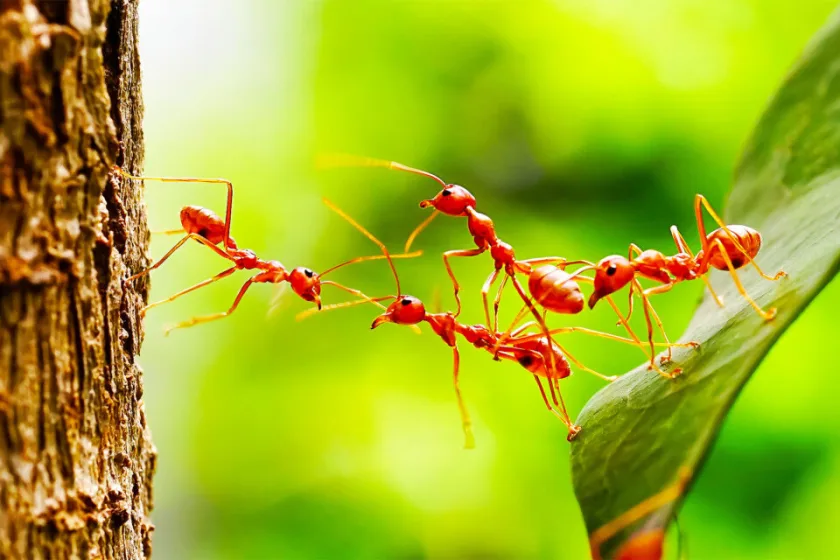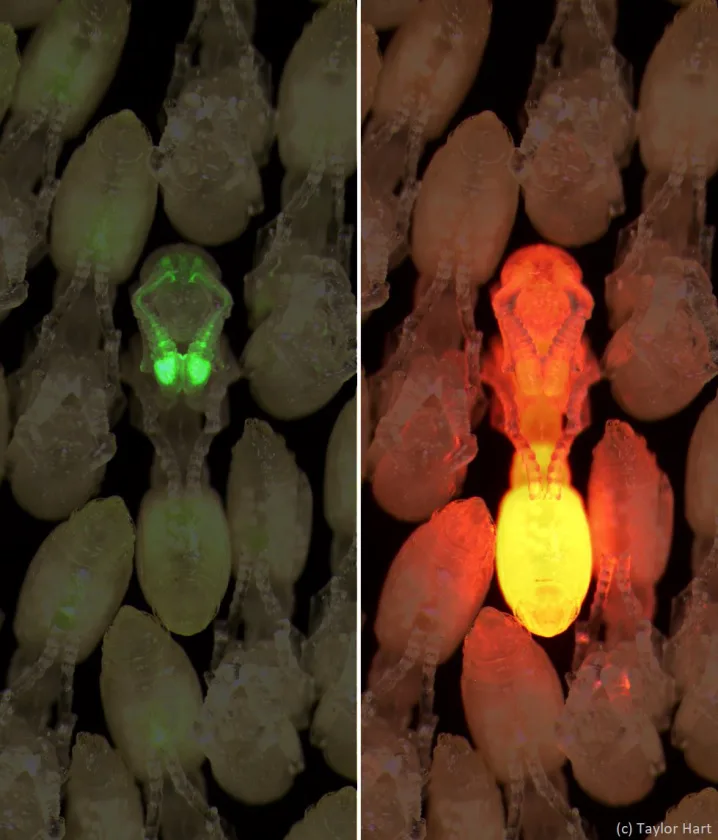
Ants are indeed fascinating creatures. Like humans, they too have developed social structures and sophisticated communication systems.
They have evolved complex olfactory system. It enables them to use various types of pheromones for communication.
What are pheromones?
Pheromones are chemical signals emitted by animals to communicate with members of their own species. Ants use pheromones extensively to communicate a wide range of information, such as:
- marking trails
- indicating food sources
- signaling danger
- identifying individuals within the colony
these tiny creatures, have specialized glands that produce different types of pheromones, each with its own distinct meaning. For example, trail pheromones are used to mark paths leading to food sources, enabling other ants to follow the trail efficiently.
A sensory hub in ants’ brain
Recent research by The Rockefeller University suggests that ants have a specific communication center in their brains. This region is responsible for processing and interpreting alarm pheromones.
This communication center acts as a sensory hub, receiving and integrating information from different sources of alarm pheromones.
This discovery suggests that these small creatures have a dedicated neural mechanism for detecting and responding to danger signals within their colonies.
When it comes to honeybees, studies indicate that they rely on multiple brain regions to coordinate their responses to a single type of pheromone. Quite unlike the ants. Therefore, it could be that ants may have more advanced brain than other insects.
Understanding connections between brain activity and behavior in ants
The researchers used an engineered protein called GCaMP. The compound was used to scan the brain activity of clonal raider ants, which were then exposed to danger signals.
The activation of specific brain regions was visualized through high-resolution microscopes adapted to detect the fluorescent compound.
Interestingly, the researchers found that only a small section of the ants’ brains exhibited increased activity in response to the danger signals.
Despite this localized response, the ants displayed immediate and complex behaviors that were labeled as the “panic response.” These behaviors included fleeing, evacuating the nest, and transporting their offspring to a safer location.
The correlation between:
- the activation of a specific brain region, and
- the subsequent panic response
implies that this specific region (in brain) plays a very important role in coordinating the ants’ behavioral reactions to danger signals.

Different ant species, different pheromones
The study also highlights that different species of ants with varying colony sizes utilize different pheromones for communication, tailored to their specific needs.
Clonal raider ants, for example, typically have relatively small colonies. On an average, it’s about tens to hundreds of individuals. These creatures exhibit panic responses as their alarm behavior.
This behavior is driven by their primary goal of escaping and surviving, given the limited number of individuals in their colonies.
On the other hand, species like army ants, which have massive colonies tend to display more aggressive behaviors. Their individuals amount to nearly hundreds of thousands or even millions.
Caste and role shape neural differences in ants
Individuals within ant colonies are divided into caste and role. And ants belonging to different castes and roles often possess slight anatomical difference.
In this study, clonal raider ants were chosen as the focal species due to their ease of control.
To facilitate the observation of broad patterns, female worker ants, were selected from a specific caste.
By focusing on a specific caste and role, researchers were able to surface potential neural differences that exist between different ant groups.
Consequently, they were able to decipher how various ant brains process and interpret the same signals.
Takeaway
Understanding communication and behavior across species is a complex process. Of course, studying neural mechanisms might help in gaining insights of the complexities that lie within ant societies.
Additionally, it will also assist in shedding light on the diverse adaptations that have evolved in response to different ecological pressures and colony sizes.
Journal Reference: Sparse and stereotyped encoding implicates a core glomerulus for ant alarm behavior. Cell, 2023; DOI: 10.1016/j.cell.2023.05.025



